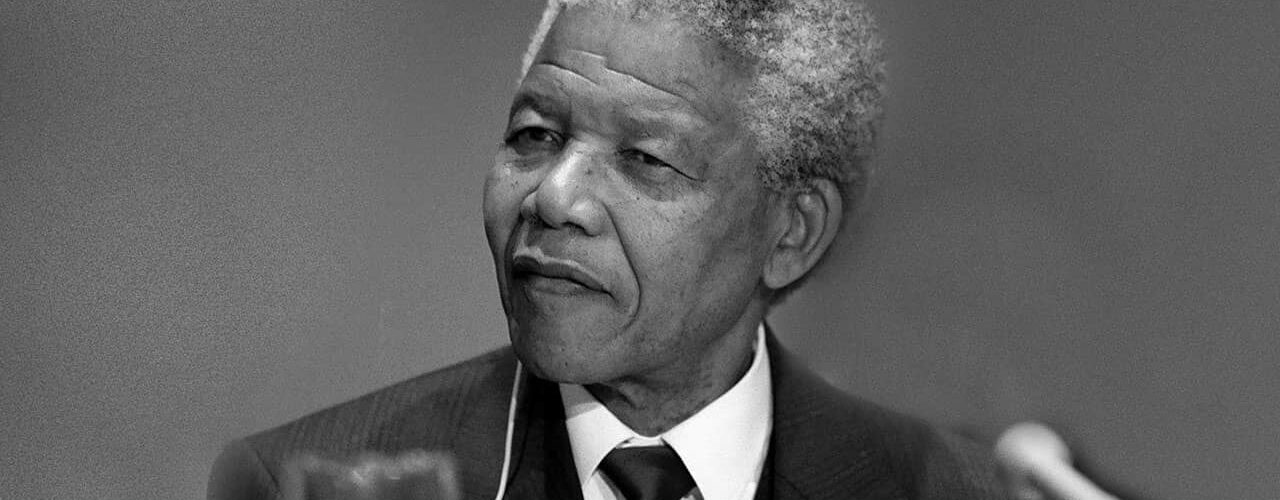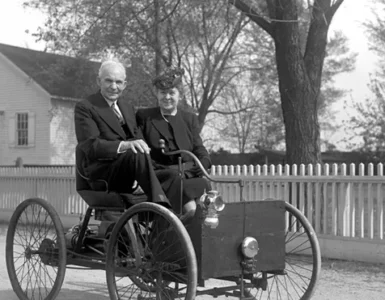Nelson Mandela, one of the most revered leaders in modern history, played a pivotal role in the struggle against apartheid in South Africa and became a global symbol of peace, freedom, and reconciliation. As the country’s first Black President and a lifelong fighter for equality, Mandela’s life story is one of courage, resilience, and unwavering commitment to justice. His journey from being imprisoned for 27 years to becoming the President of a free and democratic South Africa has inspired millions around the world. This article explores Mandela’s early life, his fight against apartheid, his time in prison, his presidency, and his lasting legacy.
Early Life and Education
Nelson Rolihlahla Mandela was born on July 18, 1918, in the village of Mvezo in the Eastern Cape of South Africa. He belonged to the Thembu royal family, part of the Xhosa-speaking people. His father, Gadla Henry Mphakanyiswa, was a chief and counselor to the monarch, and his mother, Nosekeni Fanny, was one of his father’s wives. Mandela was given the name “Rolihlahla,” which means “troublemaker” in the Xhosa language, but he was later given the English name “Nelson” by his schoolteacher, following the tradition of giving African children English names.
After his father’s death when Mandela was nine, he was placed under the guardianship of Chief Jongintaba Dalindyebo, the regent of the Thembu people. This exposure to leadership and governance influenced Mandela’s early life. He attended Clarkebury Boarding Institute, where he showed academic promise, and later went to Healdtown, a Methodist school in Fort Beaufort. In 1939, Mandela began his higher education at the University of Fort Hare, the only Western-style higher education institution for Black Africans in South Africa at the time.
However, Mandela was expelled from Fort Hare for participating in a student protest. He later moved to Johannesburg, where he completed his Bachelor of Arts degree through correspondence at the University of South Africa and studied law at Witwatersrand University, where he became more politically active.
Early Political Involvement and the Fight Against Apartheid
In the 1940s, Mandela became deeply involved in South African politics as apartheid—a legal system of racial segregation and discrimination against non-white South Africans—was taking shape. In 1944, he co-founded the African National Congress Youth League (ANCYL), a branch of the African National Congress (ANC) aimed at transforming the ANC into a mass grassroots movement against the apartheid policies imposed by the ruling white minority government.
Mandela, along with other ANCYL leaders like Walter Sisulu and Oliver Tambo, began advocating for a more radical approach to achieve political and social change. In the 1950s, he became part of the Defiance Campaign against apartheid, organizing peaceful protests and civil disobedience. He also played a key role in the Freedom Charter of 1955, which called for a democratic, non-racial South Africa. However, Mandela’s activism led to constant harassment and arrests by the apartheid government, which viewed the ANC as a threat.
The Sharpeville Massacre and Shift to Armed Struggle
In 1960, the peaceful anti-apartheid protests took a tragic turn when police opened fire on unarmed protesters in the township of Sharpeville, killing 69 people. The massacre was a turning point for the anti-apartheid movement and led to the banning of the ANC by the government. As a response, Mandela concluded that peaceful protests alone would not be enough to bring down the apartheid regime.
Mandela co-founded Umkhonto we Sizwe (MK), meaning “Spear of the Nation,” the armed wing of the ANC, which engaged in acts of sabotage against government and military targets. While Mandela emphasized that MK’s operations were meant to avoid loss of life, the government’s harsh response resulted in Mandela going underground to evade arrest, earning him the nickname “The Black Pimpernel.”
In 1962, Mandela was captured and arrested for leaving the country illegally and inciting workers to strike. During his trial, he delivered his famous “I Am Prepared to Die” speech, in which he passionately defended the ANC’s actions and reaffirmed his commitment to fighting for a free and democratic South Africa. This speech became a powerful symbol of resistance.
Imprisonment on Robben Island
In 1964, Mandela was sentenced to life imprisonment on charges of sabotage and conspiracy against the government in what became known as the Rivonia Trial. He and other ANC leaders were sent to Robben Island, a maximum-security prison off the coast of Cape Town. For the next 18 years, Mandela endured harsh conditions, performing hard labor in a limestone quarry, limited to one visitor and one letter every six months, and often subjected to brutal treatment by the prison guards.
Despite the hardships, Mandela remained a symbol of resistance. He continued his activism behind bars, leading political education classes for fellow prisoners, advocating for better conditions, and maintaining communication with the ANC and the outside world. Mandela’s imprisonment galvanized the global anti-apartheid movement, leading to increasing international pressure on the South African government to end its discriminatory policies.
In 1982, Mandela was moved to Pollsmoor Prison and later to Victor Verster Prison, where he continued to negotiate with the apartheid government for a peaceful resolution to South Africa’s political conflict.
Release from Prison and the Road to Democracy
The 1980s saw growing unrest in South Africa and increasing international sanctions and condemnation of apartheid. In 1990, under immense pressure, President F.W. de Klerk lifted the ban on the ANC and announced Mandela’s release from prison. On February 11, 1990, after 27 years behind bars, Nelson Mandela walked free from Victor Verster Prison, greeted by a jubilant crowd and the eyes of the world.
Mandela quickly took on a leadership role, working with de Klerk and other political leaders to dismantle apartheid and move South Africa toward a multiracial democracy. Despite facing resistance from some white South Africans and factions within the Black community, Mandela promoted reconciliation, emphasizing that South Africa’s future could only be secured through unity and peace.
In 1993, Mandela and de Klerk were jointly awarded the Nobel Peace Prize for their efforts to end apartheid and establish a democratic South Africa.
Becoming South Africa’s First Black President
In 1994, South Africa held its first fully democratic elections, where all races were allowed to vote. The ANC won by a significant majority, and on May 10, 1994, Nelson Mandela was sworn in as the country’s first Black President. His election marked the end of centuries of racial oppression and the beginning of a new era for South Africa.
As president, Mandela worked to heal the nation from the deep wounds of apartheid. He promoted reconciliation and forgiveness, famously wearing the national rugby team’s jersey during the 1995 Rugby World Cup to unite South Africans across racial divides. His government implemented policies to address economic inequality, poverty, and access to healthcare and education, though many of these challenges persisted.
Mandela also established the Truth and Reconciliation Commission (TRC), chaired by Archbishop Desmond Tutu, to address the human rights abuses that occurred under apartheid. The commission aimed to promote healing by allowing victims to share their experiences and perpetrators to seek amnesty in exchange for truthful confessions.
Later Life and Legacy
Mandela served only one term as President, stepping down in 1999 to make way for a new generation of leaders. He spent his later years focusing on social causes, such as HIV/AIDS awareness, conflict resolution, and children’s rights, through his Nelson Mandela Foundation. Mandela was widely respected for his humility, forgiveness, and commitment to social justice, becoming a global statesman who spoke out on issues of human rights and inequality.
Nelson Mandela passed away on December 5, 2013, at the age of 95, in Johannesburg, surrounded by his family. His death was met with an outpouring of grief and remembrance across the world, as leaders, citizens, and communities honored his legacy of courage, compassion, and the relentless pursuit of equality and justice.
Conclusion
Nelson Mandela’s life was one of struggle, sacrifice, and triumph. From his early days as an anti-apartheid activist and leader of the ANC to his 27 years of imprisonment and eventual rise as South Africa’s first Black President, Mandela demonstrated a remarkable capacity for leadership, resilience, and reconciliation. His dedication to fighting racial injustice and building a democratic society remains a powerful example for people around the world.
Mandela’s journey from a political prisoner to a Nobel laureate and president encapsulates the hope for a world where freedom, equality, and dignity are fundamental rights for all. His legacy continues to inspire movements for social change, human rights, and peace, ensuring that his message of unity and forgiveness endures for generations to come.





Add comment